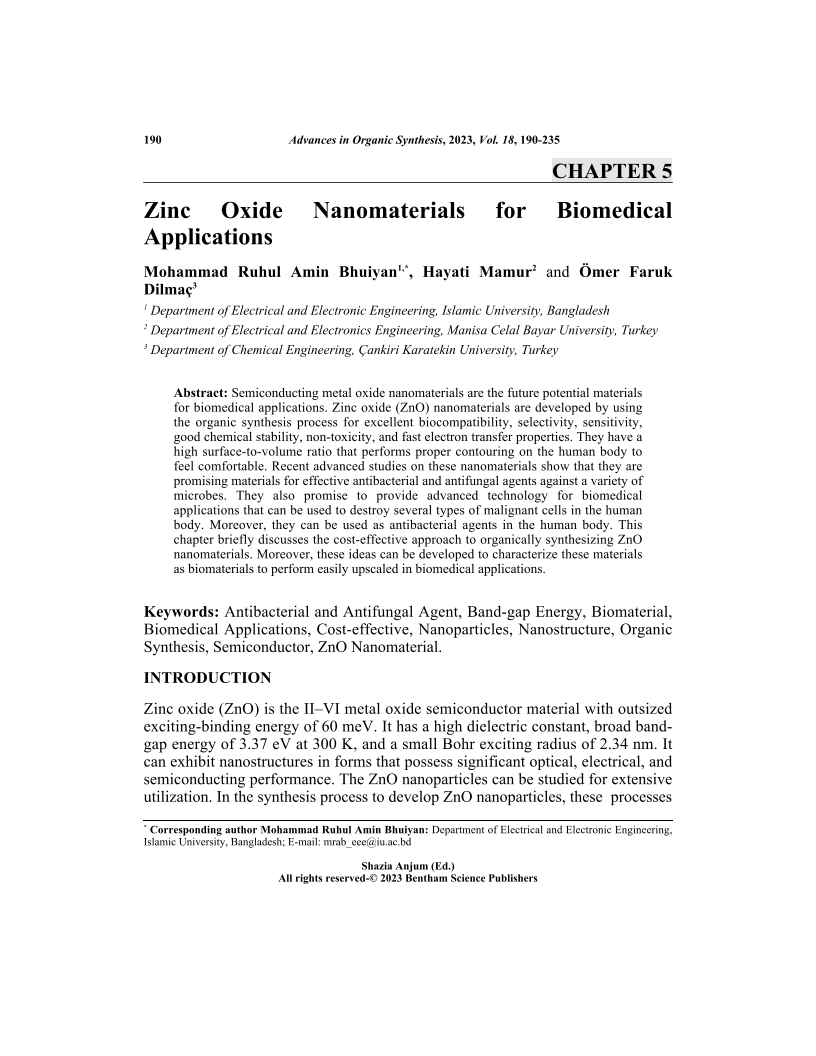Zinc Oxide Nanomaterials for Biomedical Applications

- Authors: Mohammad Ruhul Amin Bhuiyan1, Hayati Mamur2, mer Faruk Dilmaç3
-
View Affiliations Hide AffiliationsAffiliations: 1 Department of Electrical and Electronic Engineering, Islamic University, Bangladesh 2 Department of Electrical and Electronics Engineering, Manisa Celal Bayar University, Turkey 3 Department of Chemical Engineering, ankiri Karatekin University, Turkey
- Source: Advances in Organic Synthesis: Volume 18 , pp 190-235
- Publication Date: September 2023
- Language: English
Zinc Oxide Nanomaterials for Biomedical Applications, Page 1 of 1
< Previous page | Next page > /docserver/preview/fulltext/9789815040791/chap5-1.gif
Semiconducting metal oxide nanomaterials are the future potential materials for biomedical applications. Zinc oxide (ZnO) nanomaterials are developed by using the organic synthesis process for excellent biocompatibility, selectivity, sensitivity, good chemical stability, non-toxicity, and fast electron transfer properties. They have a high surface-to-volume ratio that performs proper contouring on the human body to feel comfortable. Recent advanced studies on these nanomaterials show that they are promising materials for effective antibacterial and antifungal agents against a variety of microbes. They also promise to provide advanced technology for biomedical applications that can be used to destroy several types of malignant cells in the human body. Moreover, they can be used as antibacterial agents in the human body. This chapter briefly discusses the cost-effective approach to organically synthesizing ZnO nanomaterials. Moreover, these ideas can be developed to characterize these materials as biomaterials to perform easily upscaled in biomedical applications.
-
From This Site
/content/books/9789815040791.chap5dcterms_subject,pub_keyword-contentType:Journal105

